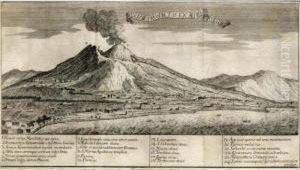Francesco Righetti Paintings
Francesco Righetti was an Italian sculptor and bronze caster who lived during the late Baroque and early Neoclassical periods. Born in 1749 in Rome, he was predominantly active in his hometown, where he established a reputation for his skillful bronze work and contributions to the ornamental arts. Although not as widely recognized as some of his contemporaries, Righetti's work reflects the transition of artistic styles that characterized the late 18th century.
Righetti was known for his craftsmanship in creating bronze sculptures, reliefs, and decorative objects. His workshop in Rome became a prominent place for the production of both large-scale statues and smaller bronze items such as candlesticks, candelabra, and other ornamental pieces. Righetti's artistry was in high demand, and he received commissions from both religious institutions and private patrons.
One significant aspect of Righetti's work was his involvement in reproducing antique sculptures. During the 18th century, there was a growing interest in classical antiquity, which led to a surge in collecting ancient artworks. Righetti's foundry specialized in creating bronze copies of famous ancient statues, which were sought after by collectors who could not obtain the original pieces. These reproductions were not only significant for their artistic merit but also for their role in disseminating classical styles and motifs across Europe.
Righetti's legacy continued beyond his lifetime through his sons, who carried on the family tradition of bronze casting. His death in 1819 marked the end of an era for the Righetti foundry, but the impact of his work on the decorative arts remained influential. Although not as well-known as other artists of his time, Righetti's contributions to the fields of sculpture and bronze casting represent an important chapter in the history of Italian art.
